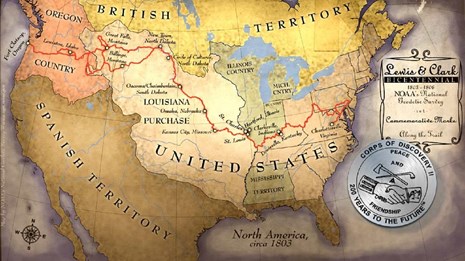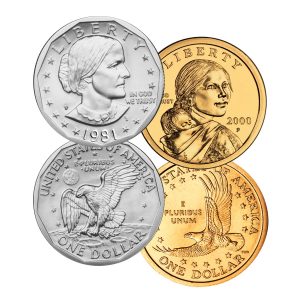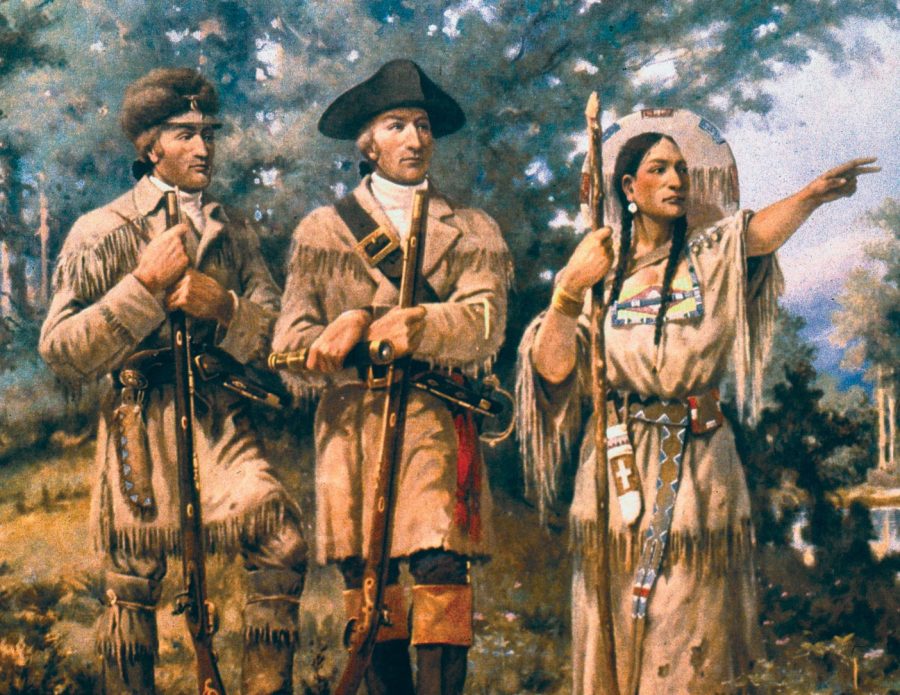The Influence of Sacagawea
Who is she? Sacagawea was a Lemhi Shoshone woman who, in her teens, helped the Lewis and Clark Expedition in achieving their chartered mission objectives by exploring.
Why is she important? The bilingual Shoshone woman Sacagawea accompanied the Lewis and Clark Corps of Discovery expedition in 1805-06 from the northern plains through the Rocky Mountains to the Pacific Ocean and back. Her skills as a translator were invaluable, as was her intimate knowledge of some difficult terrain.
What did she do? she was instrumental in the Lewis & Clark Expedition as a guide as they explored the western lands of the United States. Her presence as a woman helped dispel notions to the Native tribes that they were coming to conquer and confirmed the peacefulness of their mission. NPS Lewis & Clark Expedition

Why and when did she get put on a coin? Different designs were used every year after 2009. The Sacagawea Dollar coin was first released for circulation on January 27, 2000 with the purpose of honoring Sacagawea, the Shoshone woman who accompanied Lewis and Clark on their expedition to the Pacific Ocean.

Who did she help and why? Lewis and Clark Expedition (1804–06) was a U.S. military expedition, led by Captain Meriwether Lewis and Lieutenant William Clark, to explore the Louisiana Purchase and the Pacific Northwest. The expedition was a major chapter in the history of American exploration. Lewis and Clark met Charbonneau and quickly hired him to serve as interpreter on their expedition. Even though she was pregnant with her first child, Sacagawea was chosen to accompany them on their mission. Lewis and Clark believed that her knowledge of the Shoshone language would help them later in their journey.
Where is she from? Sacagawea was born circa 1788 in what is now the state of Idaho. When she was approximately 12 years old, Sacagawea was captured by an enemy tribe, the Hidatsa, and taken from her Lemhi Shoshone people to the Hidatsa villages near present-day Bismarck, North Dakota.
Sacagawea was an interpreter and guide for Meriwether Lewis and William Clark’s expedition westward from the Mississippi River to the Pacific Coast. Though spelled numerous ways in the journals of expedition members, Sacagawea is generally believed to be a Hidatsa name (Sacaga means “bird” and wea means “woman”). In that case, the third syllable starts with a hard g, as there is no soft g in the Hidatsa language. However, many Shoshone Indians maintain that it is a Shoshone name meaning “boat launcher” and spell and pronounce it “Sacajawea.”
Sacagawea was born circa 1788 in what is now the state of Idaho. When she was approximately 12 years old, Sacagawea was captured by an enemy tribe, the Hidatsa, and taken from her Lemhi Shoshone people to the Hidatsa villages near present-day Bismarck, North Dakota. Following her capture, French-Canadian trader Toussaint Charbonneau, who was living among the Hidatsa, claimed Sacagawea as one of his wives.
How did she meet Lewis and Clark? Sacagawea was either 16 or 17 years old when she joined the Corps of Discovery. She met Lewis and Clark while she was living among the Mandan and Hidatsa in North Dakota, though she was a Lemhi Shoshone from Idaho. On August 15, 1805, the expedition encountered the Shoshone tribe. Lewis and Clark arranged for a meeting with the chief, Cameahwait, and Sacagawea served as the translator. As she began interpreting, she realized that the chief was in fact her brother. She ran to embrace him and wept.
Once the Corps reached Idaho, Sacagawea’s knowledge of the landscape and the Shoshone language proved valuable. The Corps was eager to find the Shoshone and trade with them for horses. The success of the journey hinged on finding the tribe: without horses the explorers would be unable to get their supplies over the mountains. Recognizing landmarks in her old neighborhood, Sacagawea reassured the explorers that the Shoshone – and their horses – would soon be found. When the Expedition did meet the Shoshone, Sacagawea helped the Corps communicate, translating along with her husband.

